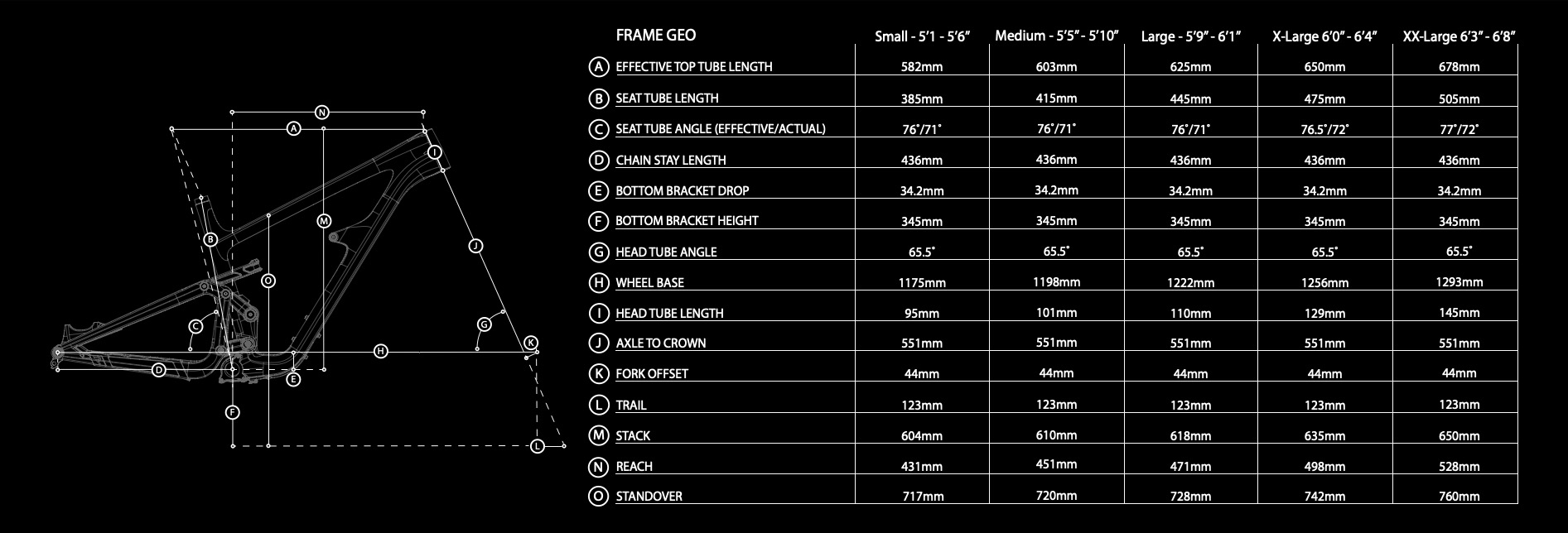Revel Rascal V2
Wheel Size: 29’’
Travel: 130 mm rear / 140 mm front
Geometry Highlights:
- Sizes offered: Small, Medium, Large, XL, XXL
- Headtube angle: 65.5°
- Seat tube angle: 76° (Size Large)
- Reach: 471 mm (size Large)
- Chainstay length: 436 mm
Frame Material: Carbon fiber
Price:
- Frames from $3,599 USD
- Complete Bikes: $5,999 to $10,499 USD
Stated Frame Weight (size M w/o shock): 6.19 lb / 2.81 kg
Blister’s Measured Weight (Rascal X0 Transmission Full Build, size Large): 31.1 lb / 14.1 kg
Test Duration: 3 months
Test Location: Washington
Reviewer: 6’, 170 lb / 183 cm, 77.1 kg
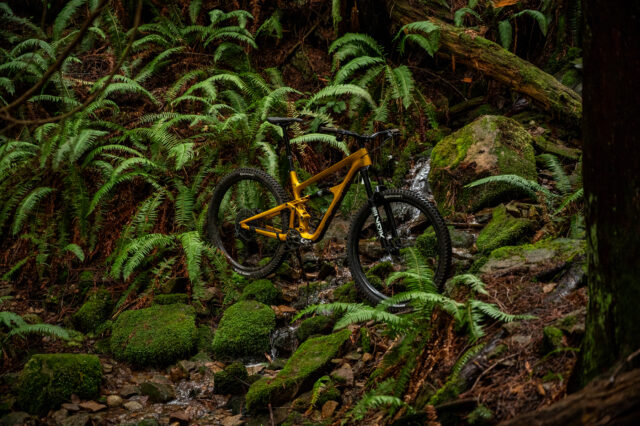
Intro
Revel calls the Rascal their “best-selling and favored model,” and today Revel is updating it with a new frame, new build kits, and so on. As you’d probably expect given the success of the original, Revel seems to have gone for more of a minor refresh than a major overhaul, but they have found a lot of little details to tweak.
We’ve been riding the new Rascal for a few months now, so here, we’ll cover what’s new and how it all adds up on trail. Then, in our Deep Dive comparisons for the new Rascal, we discuss how it stacks up against a whole bunch of other all-rounder Trail bikes.
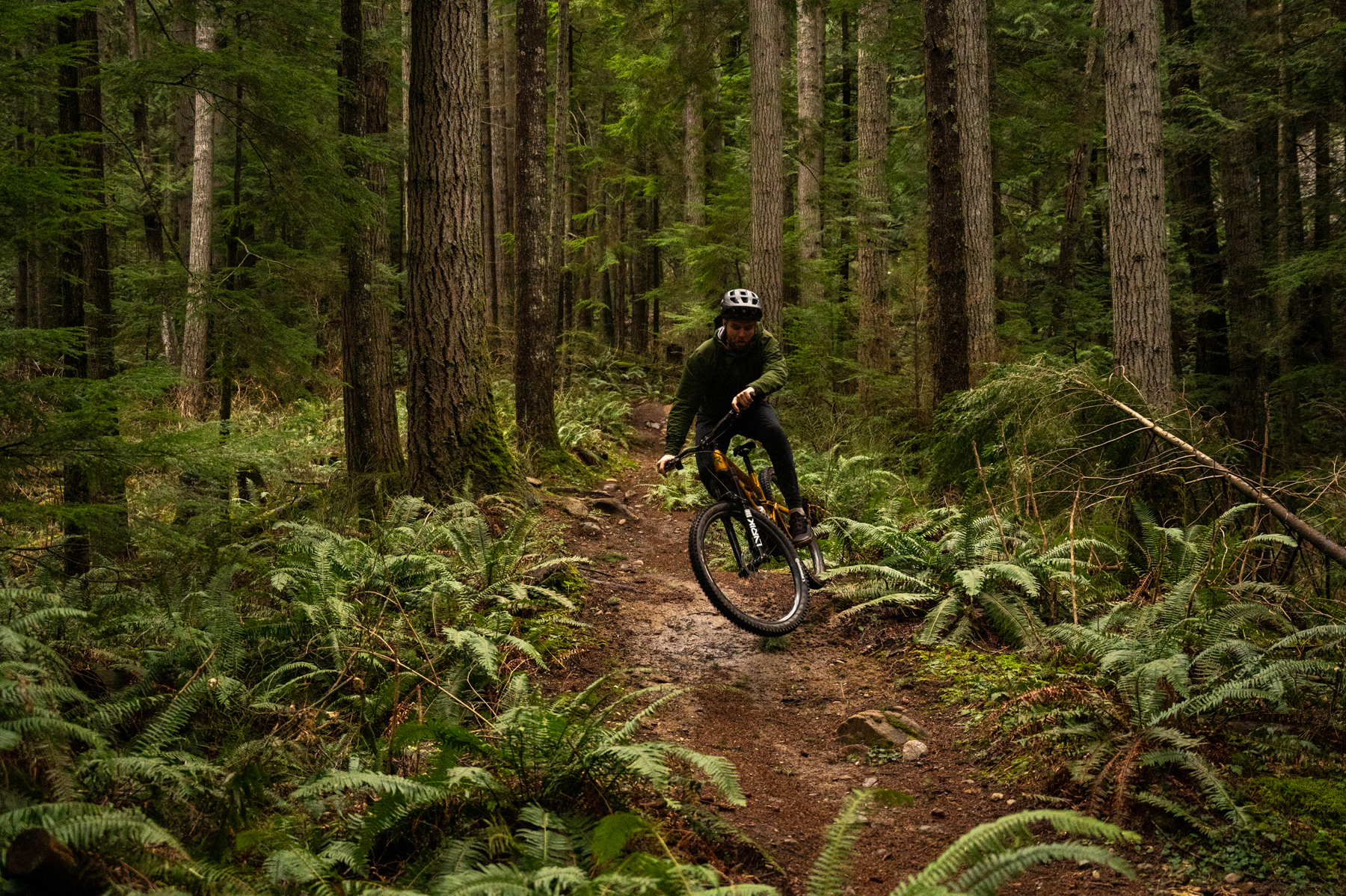
The Frame
Revel hasn’t drastically changed the high-level details of the Rascal frame. It’s still got 130 mm of rear-wheel travel, designed to be paired with a 140mm-travel fork, and uses the familiar CBF (“Canfield Balance Formula”) suspension platform with a fairly long shock yoke. Revel says that they’ve tweaked the Rascal’s suspension kinematics to improve pedaling efficiency, but also note that the changes they made on that front are minor refinements, rather than an overhaul. The kinematics of the new bike are shown below:

If you’re not familiar with CBF, the suspension platform used by Canfield and Revel, and/or you want to learn more about Revel as a whole, check out our Bikes & Big Ideas podcast with Revel founder, Adam Miller.
Though the silhouette and top-line specs haven’t changed much, the Rascal frame is all new. Its geometry has been massaged (more on that below), and Revel has redone the Rascal’s carbon layup as well. Revel says those updates to the layup have made the rear end noticeably stiffer (by a claimed 20%) while shaving about 150 grams from the frame weight.

They’ve managed to trim that weight while also beefing up the pivot axles and using larger bearings throughout. The swingarm gets a mini integrated fender to keep gunk out of the lower link pivot bearings, and rubber chainstay / seatstay guards are included, along with one for the lower portion of the downtube.
The new Rascal frame gets a UDH derailleur hanger for SRAM Transmission compatibility and keeps the threaded bottom bracket and fully-guided internal cable routing of the V1 frame. There’s room for a water bottle inside the front triangle on all sizes, plus a second set of mounts underneath the downtube. The XXL frame gets a third set underneath the top tube.
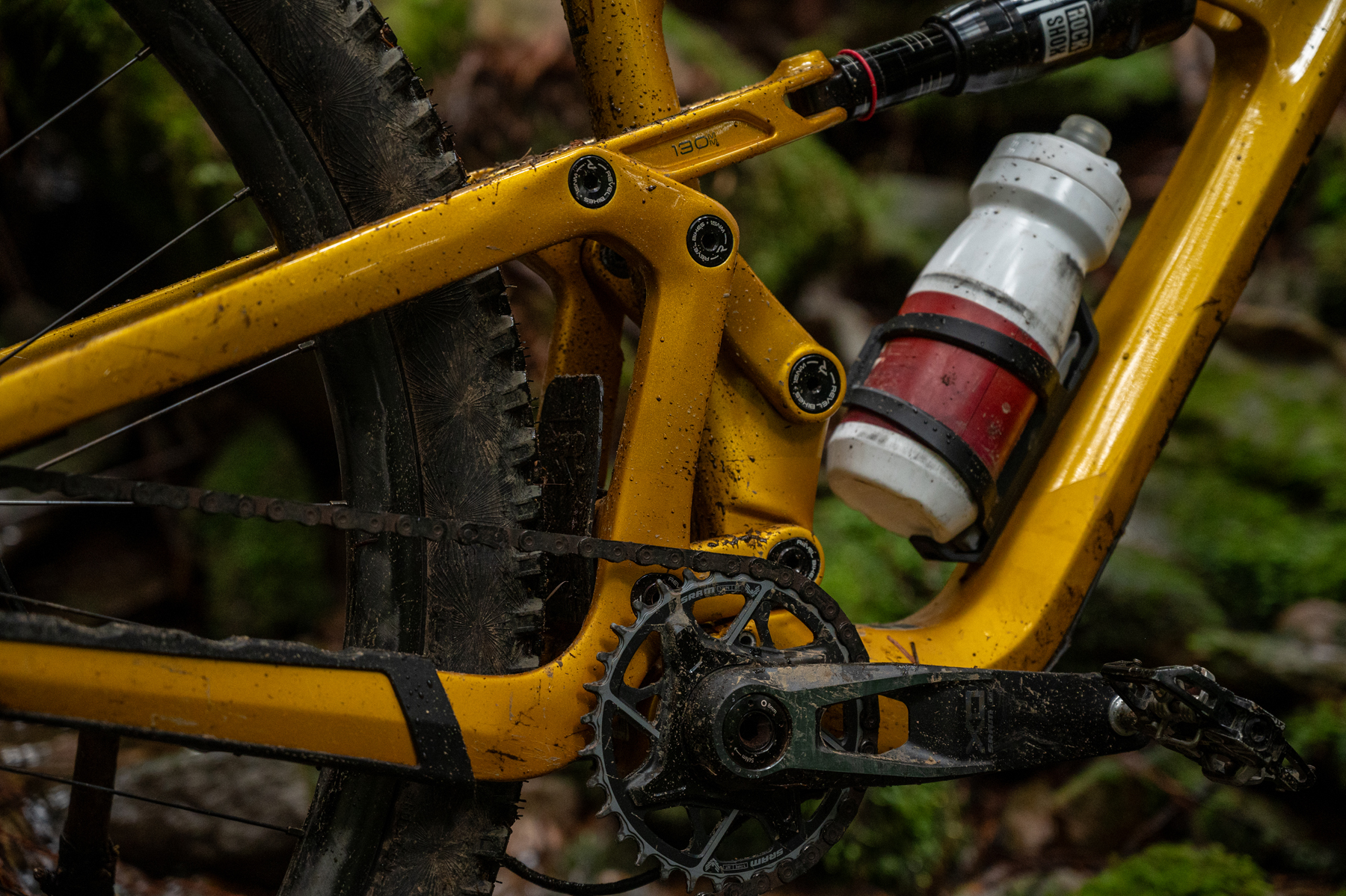
Fit & Geometry
Revel has made a lot of small tweaks to the Rascal’s geometry, but none of the individual changes are all that major. The headtube angle has been relaxed by half a degree, to 65.5°, and the seat tube angle steepened slightly (starting at 76° effective on the smaller sizes, and steepening a little on the biggest ones). The reach has grown by about 5 millimeters across the size range (to 471 mm on our size Large review bike) but the steeper seat tube means that the effective top tube measurements have shrunk a touch. The chainstays are fractionally longer on the new bike (436 mm across the size range) and the bottom bracket has been raised by a couple of millimeters, to 435 mm (34.2 mm drop).
The biggest change is the addition of an XXL size, which Revel says will work for riders up to about 6’8’’ (203 cm). The XXL frame gets a 528 mm reach, 650 mm stack height, and a 678 mm effective top tube by way of a 77° effective seat tube angle — big numbers all around.
The Builds
Revel offers the Rascal in what they officially list as six different builds, though the two Shimano XT tiers are really the same build, just with and without carbon wheels for $6,999 or $8,199.
SRAM handles the drivetrain and brake duties for the other four, with a GX mechanical build as the entry-level option at $5,999, and GX, X0, and XX T-Type builds rounding out the list for $6,499, $7,999, and $10,499, respectively.
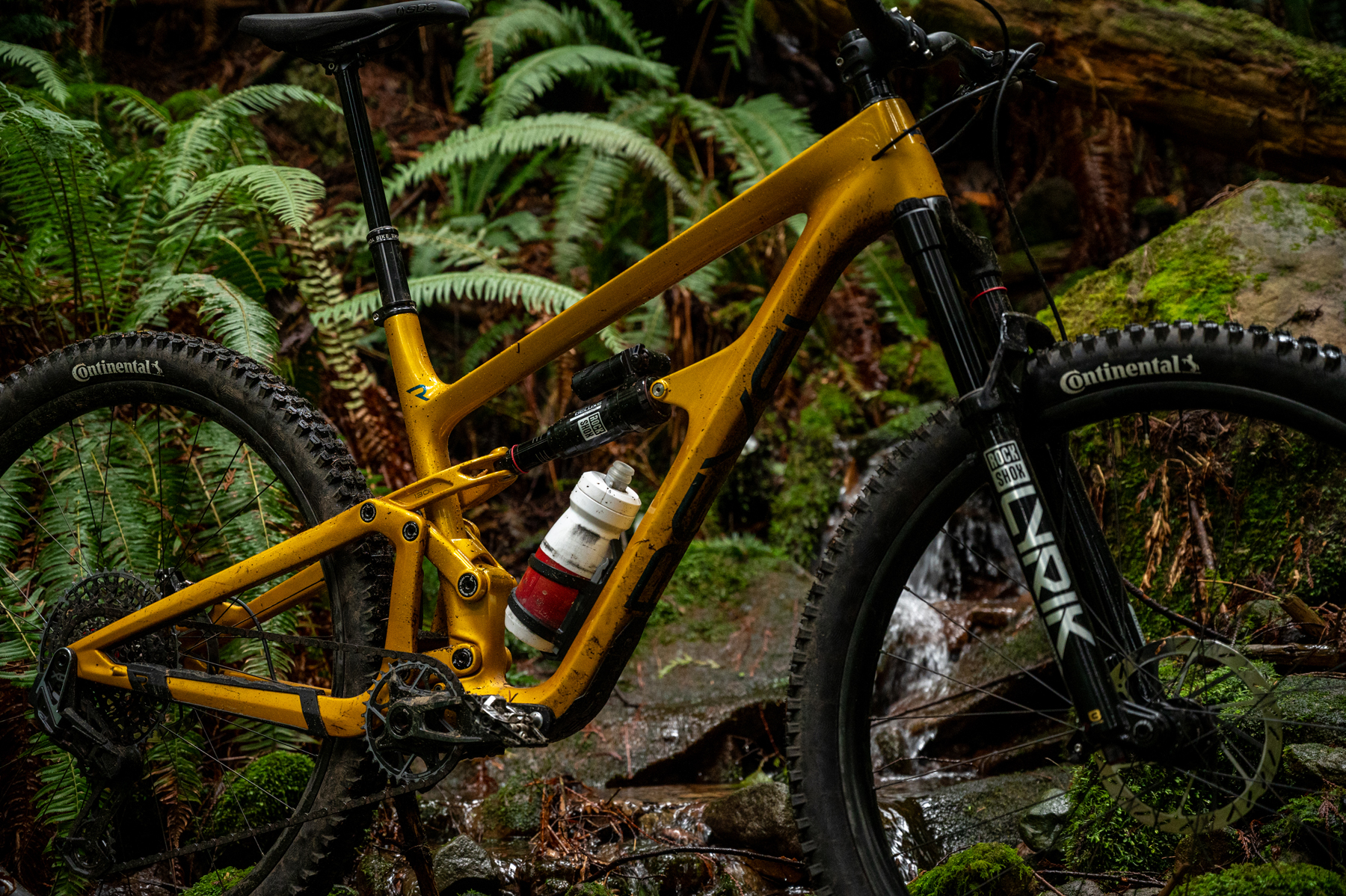
- Drivetrain: SRAM GX
- Brakes: SRAM Code R (w/ 180 mm rotors)
- Fork: RockShox Lyrik Select+
- Shock: RockShox Super Deluxe Ultimate
- Wheels: Crank Brothers Synthesis Alloy
- Dropper Post: Crank Brothers Highline 7
- Drivetrain: SRAM GX Transmission
- Brakes: SRAM Code Bronze Stealth (w/ 180 mm rotors)
- Fork: RockShox Lyrik Select+
- Shock: RockShox Super Deluxe Ultimate
- Wheels: Crank Brothers Synthesis Alloy
- Dropper Post: Crank Brothers Highline 7
- Drivetrain: Shimano XT
- Brakes: Shimano XT 4-piston (w/ 180 mm rotors)
- Fork: Fox Float X Factory
- Shock: Fox 36 Factory
- Wheels: Crank Brothers Synthesis Alloy
- Upgrade: Revel RW30 V2 rims w/ Industry Nine Hydra Hubs (+$1,200)
- Dropper Post: Bike Yoke Revive
- Drivetrain: SRAM X0 Transmission
- Brakes: SRAM Code RSC (w/ 180 mm rotors)
- Fork: RockShox Lyrik Ultimate
- Shock: RockShox Super Deluxe Ultimate
- Wheels: Crank Brothers Synthesis Alloy
- Upgrade: Revel RW30 V2 rims w/ Industry Nine Hydra Hubs (+$1,200)
- Dropper Post: Bike Yoke Revive
- Drivetrain: SRAM XX Transmission
- Brakes: SRAM Code Ultimate Stealth (w/ 180 mm rotors)
- Fork: RockShox Lyrik Ultimate
- Shock: RockShox Super Deluxe Ultimate
- Wheels: Revel RW30 V2 rims w/ Industry Nine Hydra Hubs
- Dropper Post: Bike Yoke Revive
FULL REVIEW
I’ve spent the last three months with the new Rascal, which was somehow the first bike I’ve been on from Revel. A bunch of our other reviewers have been impressed by several of their bikes over the years, from the XC-oriented Ranger to the longer-travel Rail 29, and I was excited to get a taste for myself.
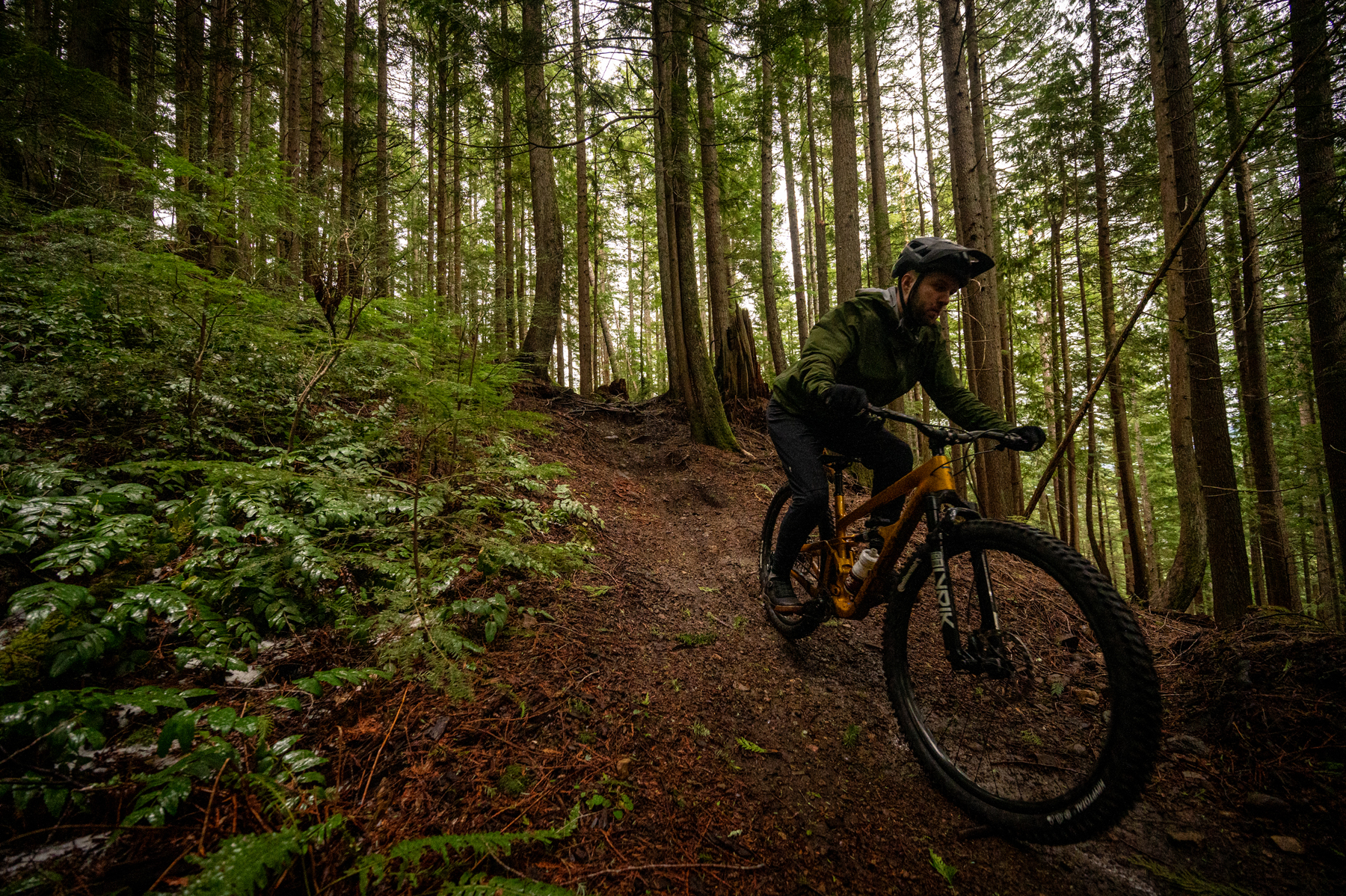
Fit & Sizing
David Golay (6’, 170 lb / 183 cm, 77.1 kg): Revel’s recommended sizing bands put me in the overlapping region where I could ride either the Large or XL frame, but I was quite happy with the fit of the Large that I reviewed and wasn’t particularly tempted to size up. That mostly just comes down to the character of the Rascal. I’m sure I could ride the XL, but it’s a versatile, fairly nimble Trail bike first and foremost, and if I was looking for a big bump up in stability and composure, I’d be more inclined to opt for a different, slacker, longer-travel bike instead.
That’s not a swipe at the Rascal’s descending prowess — as we’ll get into in a minute, I think it’s quite well sorted for its class. It just strikes me as a bike that’s best suited to folks who want something that’s fairly nimble and engaging on more rolling, varied terrain, and opting for a not-super-huge size caters to that well.
The Rascal’s seat tube is steep enough that the effective top tube isn’t super long relative to its reach — a factor that would stop me from sizing up on many other bikes in this travel range — and I do think that I could still get comfortable on the XL. Revel’s sizing bands seem generally reasonable, and the Rascal’s geometry is well thought out to give a lot of folks the option to size up or down depending on their preferences. For me, that meant sticking with my typical size Large. I did swap in a slightly higher-rise bar for most of the test, which in part made the Rascal feel a little roomier, but I wasn’t looking to make big changes on that front.
Climbing
The Rascal is a great bike on the ascents, especially for folks who want something that offers pretty good efficiency paired with excellent traction under power — a combo that’s especially nice for tackling rougher, more technical climbs. I’ve ridden and gotten along well with CBF suspension on some (mostly much) longer-travel bikes, but if anything, I’m even more impressed with how it translates to the shorter-travel package here.
It’s the Rascal’s combination of good efficiency and excellent traction under power that really sets it apart. Those two traits tend to be in conflict with each other to some extent, but the Rascal does an outstanding job of being solidly efficient (not best-in-class for a ~130mm-travel Trail bike, but good) while feeling extremely grippy and compliant while putting down power.
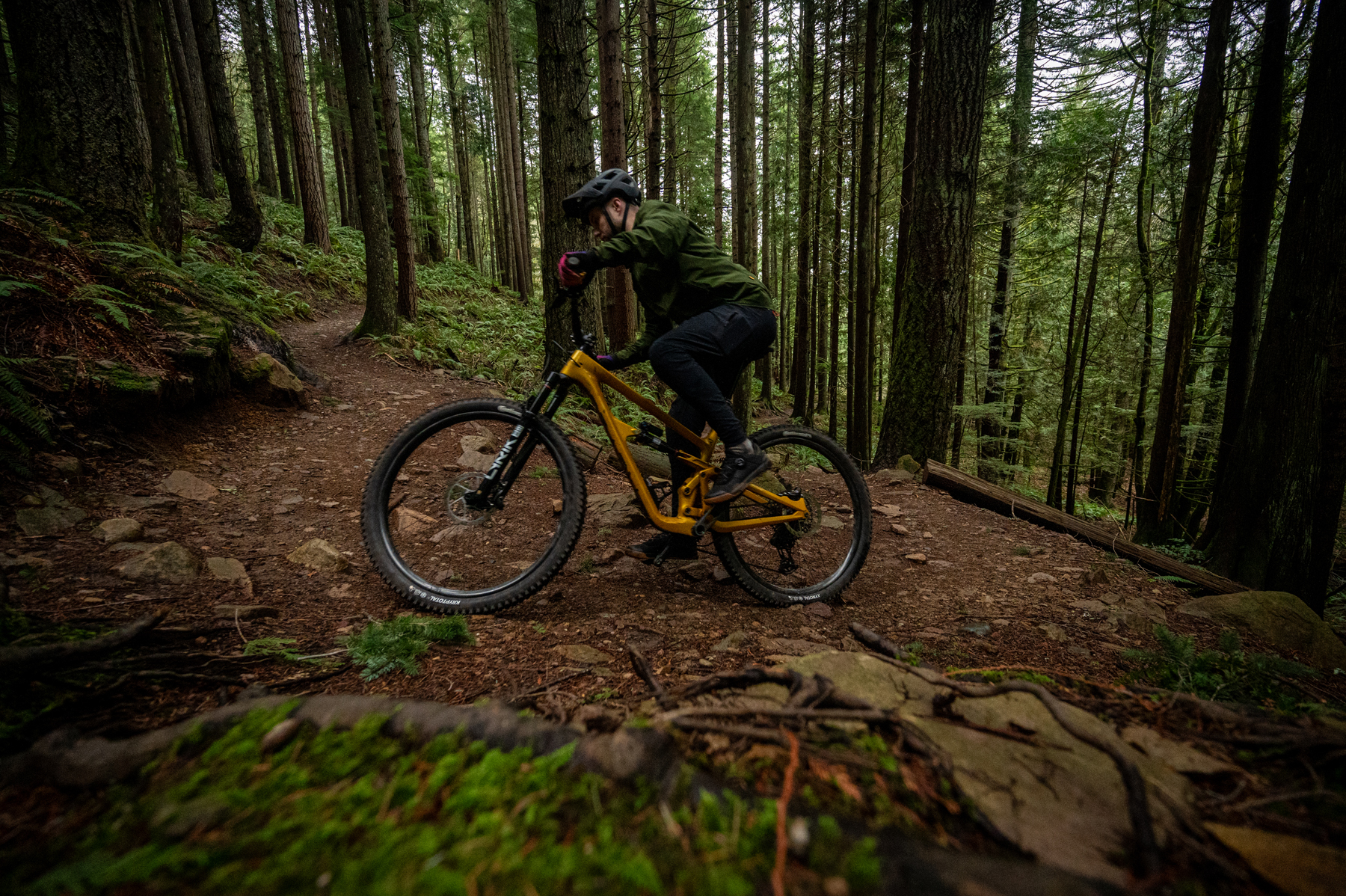
Between its suspension performance and relatively nimble handling, the Rascal is one of the very best technical-climbing bikes I’ve been on in recent memory. A lot of bikes that do a notably good job of maintaining traction under power can also feel a little wallowy and too eager to use the middle part of their travel, particularly when tracking over bumps at low speeds or doing big weight shifts to loft one end of the bike over an obstacle. That wallowing drops the bottom bracket, making pedal clearance more of a challenge, and can move around the balance point on the bike in ways that can be tricky to counter.
The Rascal does a seriously impressive job of maintaining grip without feeling like it’s using up any more suspension travel than it needs to. It’s quite cushy and compliant while being well-controlled and exhibiting few of the normal downsides of ultra plush-feeling setups.
The Rascal is a good climber when the trail smooths out, too, but it’s less of a standout there, where its suspension performance is less beneficial. It’s still pretty efficient and its fit and pedaling position work well for me, but I’d say similar things about a lot of ~120–130mm-travel Trail bikes; the Rascal seems more regular-good than particularly special on that front.
The Rascal doesn’t feel like an ultra-snappy, XC-derived take on a Trail bike that puts down power with ruthless efficiency; for what it’s worth, just about every bike I would put in that category has at least a little less suspension travel than the Rascal. But I think most folks who have realistic expectations for how a ~130mm-travel Trail bike can pedal will at least get along fine with the Rascal on that front, and potentially really click with it — especially those who’d prioritize a little extra compliance and grip while putting down power.
I’ve gotten along quite well with the pedaling position and low-speed handling of the Rascal. Its seat tube angle is a nice level of steep-ish, where I haven’t had any trouble staying centered on the bike and keeping the front wheel planted, even on very steep climbs, while being relaxed enough that seated pedaling on flat ground still feels natural and comfortable, too. The Rascal also does a nice job of being pretty maneuverable at lower speeds and tighter spots — again, technical climbing is a real strong suit for this bike — without feeling twitchy or too quick in its handling. It’s just really well-rounded and intuitive.
Descending
That theme of versatility and predictability continues when you point the Rascal back down the hill. Its handling feels very neutral and intuitive, and kind of doesn’t stand out for any one thing in particular — in a good way.
There are a lot of bikes that I hop on and require an adjustment period in order to dial in the setup, get used to their fit and handling, and so on. That really wasn’t the case with the Rascal. As mentioned earlier, I did swap in a slightly higher-rise bar and stem package after a handful of rides, but the stock setup wasn’t far off from where I wanted to end up, and I found the Rascal to be very easy to just get on and go with little fuss.

The Rascal doesn’t want to be ridden from a super centered, upright position — at least not the Large frame; I’d expect the smaller sizes to be more tolerant of that and the larger ones less so, given the constant length chainstays across the size range. Aside from super centered, it’s pretty tolerant of a range of stances. It’s possible to get the Rascal’s front end to wander if you’re riding way off the back in less-than-super-steep terrain, but so long as you’re not tailgunning badly, the Rascal feels adaptable to a range of approaches.
The Rascal’s handling feels very nicely middle-of-the-road on a lot of fronts. It’s reasonably quick handling and nimble for its class and doesn’t take a ton of speed to come alive, but is still stable enough to handle some steeper, rougher trails reasonably well, too. When it comes to tackling burlier terrain, the Rascal is, of course, less composed and confidence-inspiring than any number of bikes with considerably more travel, bigger wheelbases, etc. But the Rascal is vastly more engaging than those sorts of bikes the rest of the time, and the Rascal can handle a lot if you dial things back a bit and ride reasonably cleanly.
I wouldn’t say that the Rascal feels like it has more travel than it does, exactly, but rather that it stands out for how effectively it uses the travel it does have. It’s a pretty lively, energetic feeling bike in ways that bikes with substantially more suspension travel rarely are, but the Rascal offers very, very good small-bump sensitivity and a generally compliant, comfortable ride for a ~130mm-travel bike.
The Build
The Rascal’s X0 Transmission build that I tested is, unsurprisingly, quite nice, and didn’t leave me wanting for much.
I’m a big fan of the fact that Revel went for the beefier Super Deluxe and Lyrik suspension package on the Rascal. The lighter-duty Deluxe shock and Pike fork wouldn’t be out of place on a 130/140 mm travel bike, but especially for a bike in that class where the suspension performance is one of the biggest standout features, it was a great call on Revel’s part to lean in there.
Revel’s own carbon wheels were also a highlight, with a similarly smooth, muted ride to the Forge+Bond 30AMs that I’ve been spending a lot of time on lately (full review coming soon). That checks out, given that they’re both thermoplastic carbon rims made by CSS Composites.
This was my first time riding the “Trail” casing / “Endurance” rubber versions of Continental’s Kryptotal (front) and Xynotal (rear) tires, after being a huge fan of the Downhill casing versions, and I came away impressed.
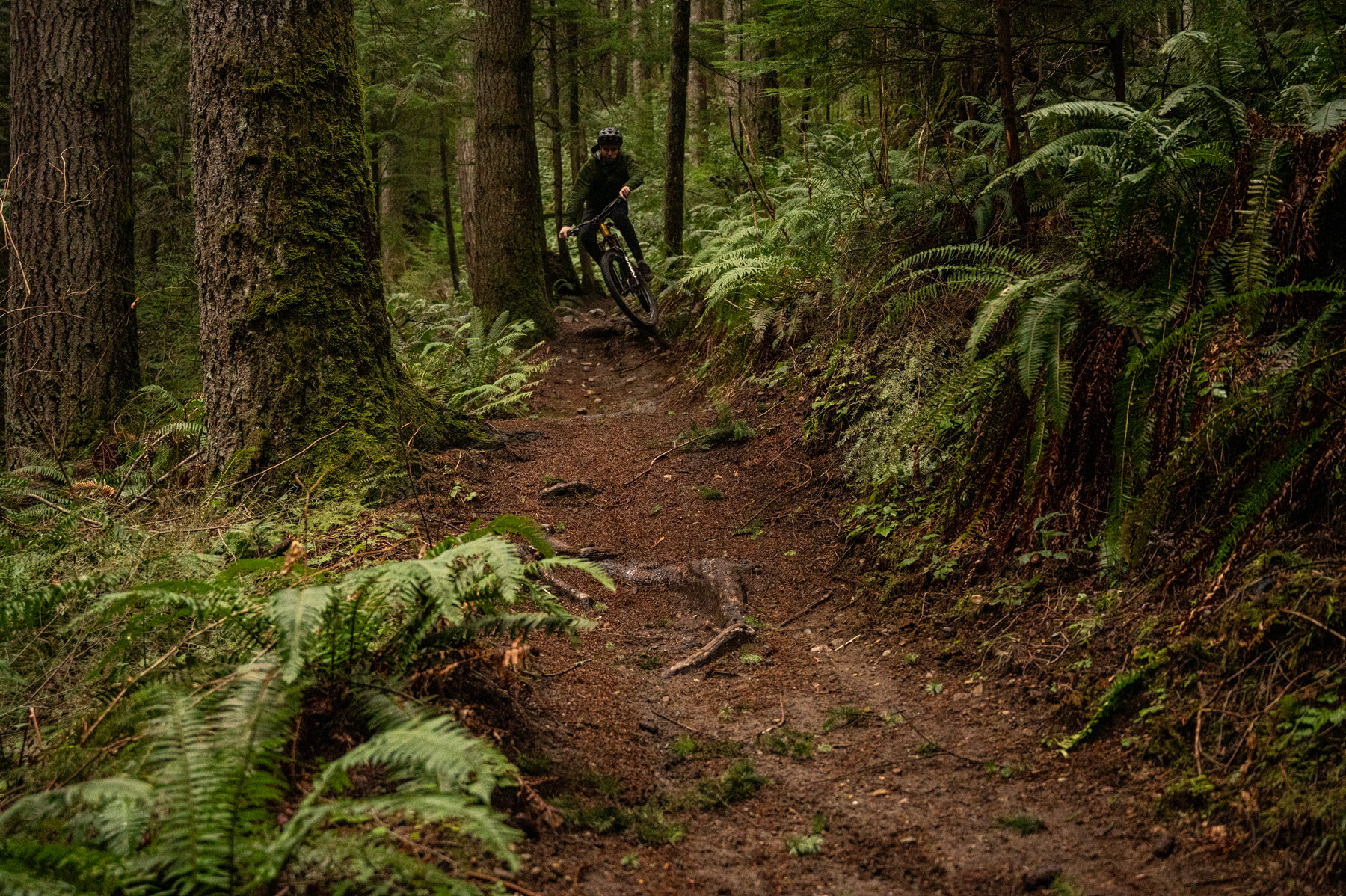
I frankly hated the spikier, softer-soil-oriented Continental Argotal in their firmer Endurance rubber (a combination of tread pattern and rubber formulation that I think makes no sense). That said, the firm-ish Endurance rubber feels much more coherent on the more versatile Kryptotal and Xynotal that came on the Rascal. I appreciated their combination of very low rolling resistance + pretty good grip in firmer to mixed conditions. I did find myself wanting stickier rubber on wet roots in particular during some of the wetter, less pleasant rides I got on the Rascal in the depths of the PNW winter. I swapped on a Maxxis DHF MaxxGrip / DHRII MaxxTerra combination for a good portion of the test, but I’m pleased to report that I quite like the Trail versions of the Kryptotal and Xynotal in less sodden conditions.
[For a whole lot more on Continental’s overhauled tire lineup and the development that went into it, check out Ep.209 of Bikes & Big Ideas.]
I did swap out the Rascal X0 Transmission build’s Trail1 bar and stem for a setup with a little more rise, following the first couple of rides. I could get pretty close to high enough with the stock setup but didn’t love the sweep of the stock bar (totally personal preference). I also appreciated the slightly roomier cockpit I got from moving the stem back down on the steerer tube and the extra height I wanted via more bar rise. The Trail1 bar also had an alarming discrepancy between the carbon layup from one side to the other — the left side of the bar had fairly consistent wall thickness around the whole circumference, but the right side had the inner bore pretty far off center, with a dramatic thin side to the bar wall and a corresponding thick side opposite. I’m a little wary of carbon bars in general, and noticing that sloppy layup was more than enough to put me off.
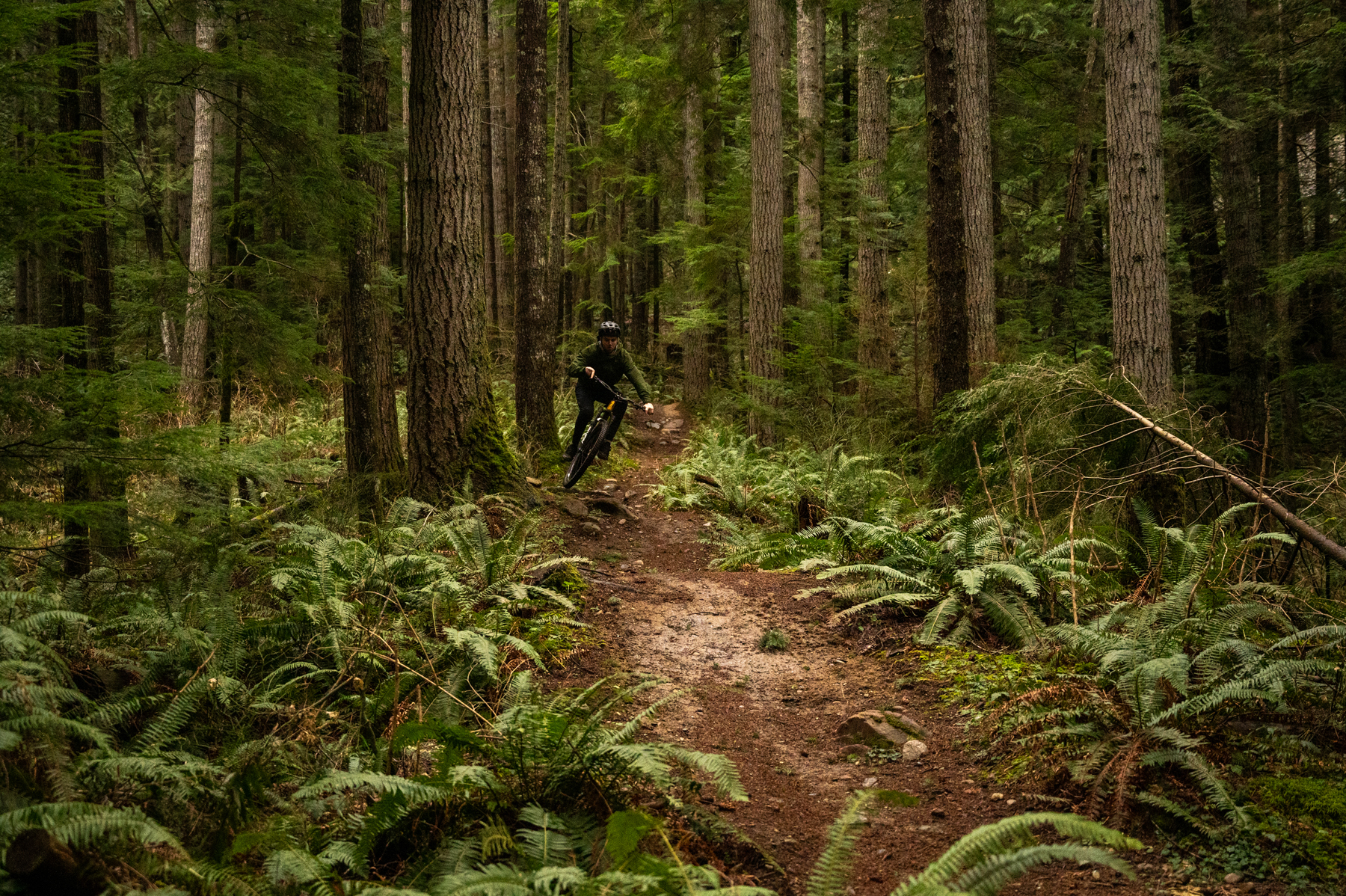
Who’s It For?
I think the Rascal is a great call for a lot of people who want a really versatile do-it-all Trail bike, especially folks for whom a longer-travel, more stable bike would be overkill, but who find a lot of ~120–130mm-travel Trail bikes to be too harsh and unforgiving on rougher trails.
The Rascal especially stands out for its suspension performance while still feeling and handling like a nimble Trail bike, rather than trying to be a mini-Enduro one, and that’s a somewhat unusual — but potentially quite compelling — combination.
Bottom Line
The latest Revel Rascal does an especially good job of being relatively compliant, comfortable, and making extremely good use of its not-super-copious suspension travel — all while still feeling lively, pedaling efficiently, and generally feeling like a true all-rounder with standout suspension performance, rather than a big bike stuck in a little bike’s body.
The Rascal is quick handling and lively first and foremost, but it’s composed enough to handle a lot of steeper, rougher trails when paired with a capable and focused rider. It’s also an outstanding technical climber, and remarkably balanced and intuitive in a wide range of situations. It’s an easy bike to recommend to a whole lot of folks, and one of the more impressive takes on a short-ish travel do-it-all bike I’ve ridden to date.
Deep Dive Comparisons
BLISTER+ members and those who purchase our Digital Access Pass can check out our Deep Dive comparisons linked below. Get our Digital Access Pass to view all our Deep Dives and Flash Reviews, or become a BLISTER+ member today to get access to that and a LOT more, including the best worldwide Outdoor Injury Insurance, exclusive deals and discounts on skis, personalized gear recommendations from us, and much more.
Check out our Deep Dive comparisons of the Revel Rascal to see how it compares to the Santa Cruz Hightower, Santa Cruz Tallboy, Transition Smuggler, Trek Fuel EX, Yeti SB140, Orbea Occam LT, Yeti SB135, Canyon Spectral 125, Chromag Darco, and Rocky Mountain Element.

